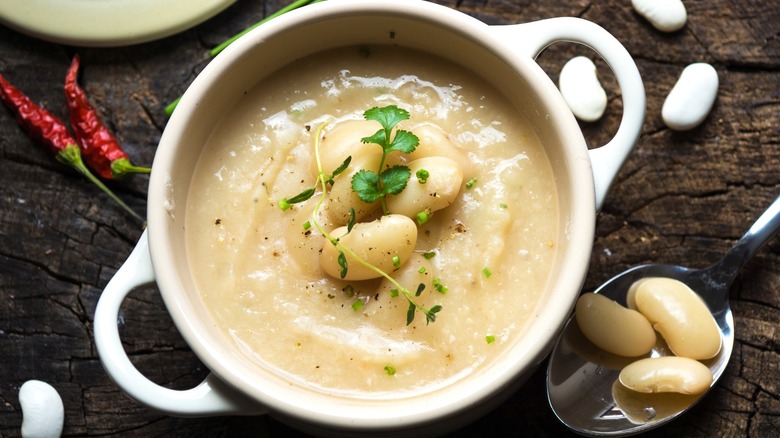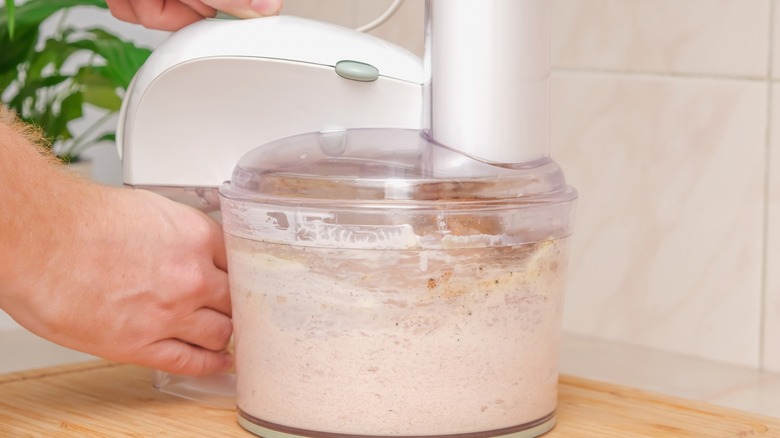For A Smoother Navy Bean Soup, Purée It In The Food Processor
There's nothing quite like the hearty embrace of a bowl of navy bean soup, especially when the temperatures dip and the cozy comforts of home beckon us. This classic, brimming with rich flavors and packed with wholesome nutrients, has been a staple in kitchens for ages. However, not everyone is a fan of its rustic texture. If you're yearning for a silken variation of this soup, the food processor is your best ally.
Navy bean soup, traditionally made with navy beans, vegetables, herbs, and sometimes ham or bacon, is renowned for its chunky consistency. These small, white beans, (also known as Yankee beans, pea beans, haricots, or Boston beans) cook down to a soft texture but can retain some of their chewiness unless they're specifically processed for creaminess. This is where your trusty food processor comes into play.
Why opt for a smoother texture? Firstly, a creamier consistency offers a different dining experience. Instead of navigating through beans and chunks of ingredients, every spoonful delivers an even taste of all the soup's elements creating a delightful harmony of flavors in your mouth. Secondly, for those who have texture sensitivities or are serving the soup to young ones, puréed soups can be more palatable. There's a velvety quality to them that feels indulgent and can be easier for diners to eat and enjoy.
How to create a smooth navy bean soup
Once your navy bean soup has been cooked and the beans are soft, let the mixture cool for a bit. Then, in batches, transfer the soup to your food processor. The trick is not to fill the processor too full to prevent overflow or spillage. Pulse until you reach your desired level of smoothness. If you find the soup too thick, you can always add a bit of broth or water to thin it out to your liking. Now, if you don't have a food processor, don't despair. A blender works wonderfully, too. Some even prefer immersion or stick blenders which allow you to purée directly in the pot, eliminating the need to transfer soup back and forth.
And in case you're teetering between the traditional chunky and the creamy navy bean soup, there's a delightful middle ground. You don't have to process your entire dish, simply separate a small portion of the soup and blend just that. Once it's been puréed to your liking, you can mix it back into the unprocessed soup. This method provides a thick soup base while still allowing some of the beans and ingredients to remain whole, offering a delightful combination of textures in every spoonful.
So, whether you like your soup fully puréed, traditionally chunky, or somewhere in between, there's no wrong way to savor this timeless comfort dish. Dive in, experiment, and discover your perfect bowl of navy bean soup!

